
Animal fact sheet
- Subject:
- Life Science
- Zoology
- Material Type:
- Reading
- Date Added:
- 11/13/2018

Animal fact sheet
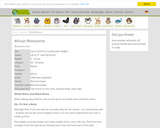
Animal fact sheet
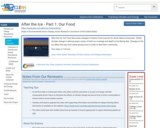
After the Ice: Our Food discusses changes in historic food sources for Arctic Native Americans. Global climate change is altering yearly cycles of both ice coverage and depth in the Bering Sea. Changes in the ice affect the way local native groups hunt in order to feed their community.
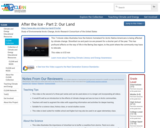
This 7-minute video illustrates how the historic homeland for Arctic Native Americans is being affected by climate change. Shorefast ice and pack ice are present for a shorter part of the year. This has profound affects on the way of life in the Bering Sea region, to the point where the community may have to relocate.
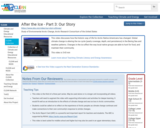
This video discusses how the historic way of life for Arctic Native Americans has changed. Global climate change is altering the ice cycle (yearly coverage, depth, and persistence) in the Bering Sea and weather patterns. Changes in the ice affect the way local native groups are able to hunt for food, and maintain their community.
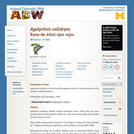
Agalychnis callidryas: Information

Agama agama: Information
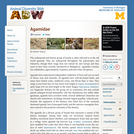
Agamidae: Information

This resource is a video abstract of a research paper created by Research Square on behalf of its authors. It provides a synopsis that's easy to understand, and can be used to introduce the topics it covers to students, researchers, and the general public. The video's transcript is also provided in full, with a portion provided below for preview:
"Our bodies are home to millions of microscopic organisms – our microbiome. While these microbes have many important functions that maintain our health and well-being, our microbiome changes as we age, which can cause infection or inflammation. Understanding these changes in humans is difficult due to our long lifespan and confounding factors such as healthcare and diet. A recent study used an animal model – free-ranging rhesus macaques – to better understand the changes that occur in our microbiomes with age, using a cross-sectional dataset of oral, rectal, and genital swabs collected from 105 macaques belonging to one social group. In contrast to adult macaques, researchers found that infant gut microbial communities had higher abundances of Bifidobacterium and Bacteroides, consistent with a milk-rich diet. The genital microbiome varied substantially between males and females, and while penile microbiomes changed with age, vaginal microbiomes did not..."
The rest of the transcript, along with a link to the research itself, is available on the resource itself.

This resource is a video abstract of a research paper created by Research Square on behalf of its authors. It provides a synopsis that's easy to understand, and can be used to introduce the topics it covers to students, researchers, and the general public. The video's transcript is also provided in full, with a portion provided below for preview:
"Changes in the gut microbiota are associated with numerous ageing-related disorders. Microbiome rejuvenation through probiotic treatment or faecal microbiota transplantation can promote healthy ageing. However, in animal studies, it remains difficult to successfully prolong the health span of aged mice via gut microbiome manipulation. Researchers recently attempted several methods to rejuvenate the microbiomes of aged mice by co-housing young and old mice, injecting old mice with serum from young mice, and surgically combining young and old mice via their circulatory systems. As mice aged, the gut microbiota composition and gene abundance changed dynamically, but the rejuvenation procedures reversed the deterioration of microbe communities and intestinal immunity in aged mice. According to metagenomics, high abundance of Akkermansia (AK) bacteria and the activity of the butyrate synthesis pathway played key roles in the restorative effects..."
The rest of the transcript, along with a link to the research itself, is available on the resource itself.
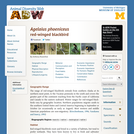
Agelaius phoeniceus: Information
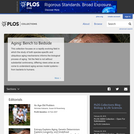
This collection focuses on a rapidly evolving field in which the study of both species-specific and ubiquitous aging mechanisms informs the biological process of aging. Yet the field is not without substantial controversy, differing views arise as we come to understand aging across model systems - from bacteria to humans.
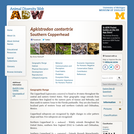
Agkistrodon contortrix: Information
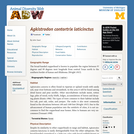
Agkistrodon contortrix laticinctus: Information
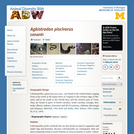
Agkistrodon piscivorus: Information

Agoutidae: Information
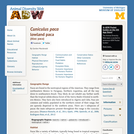
Agouti paca: Information
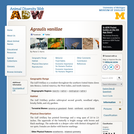
Agraulis vanillae: Information
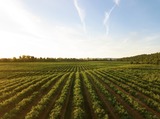
Agricultural Connections is a middle school curricular program framework created by EarthGen. For this unit, we offer professional development training and assistance with implementation. Please let us know if you are interested in implementing this program at your school or district! Please contact info@earthgenwa.org for more information.
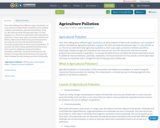
Even when talking about different types of pollution, we were unaware of these kinds of pollution such as plastic pollution, soil pollution, agricultural pollution, smog etc. But when we study the particular topic, it is very familiar to us. Thus let us understand what agricultural pollution is, their cause, types, prevention methods and effects, elaborately. Pollution by agricultural practices has come up ever since the demand for food has increased, proportional to the increase in population. To increase the yield of farms and fields the farmers have had to resort to additional chemical fertilizers, pesticides, weedicides, hormonal treatments for the animals, nutrient laden feed and many such practices which changed the way farming was done traditionally.